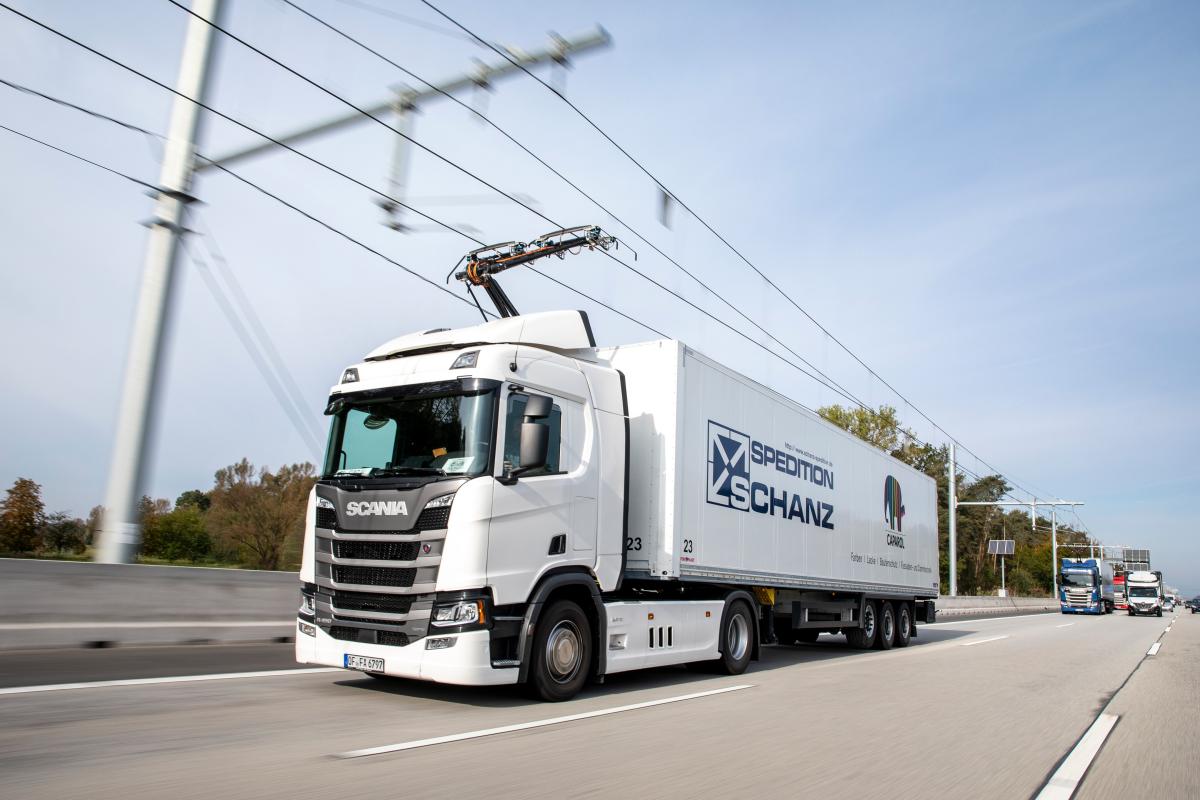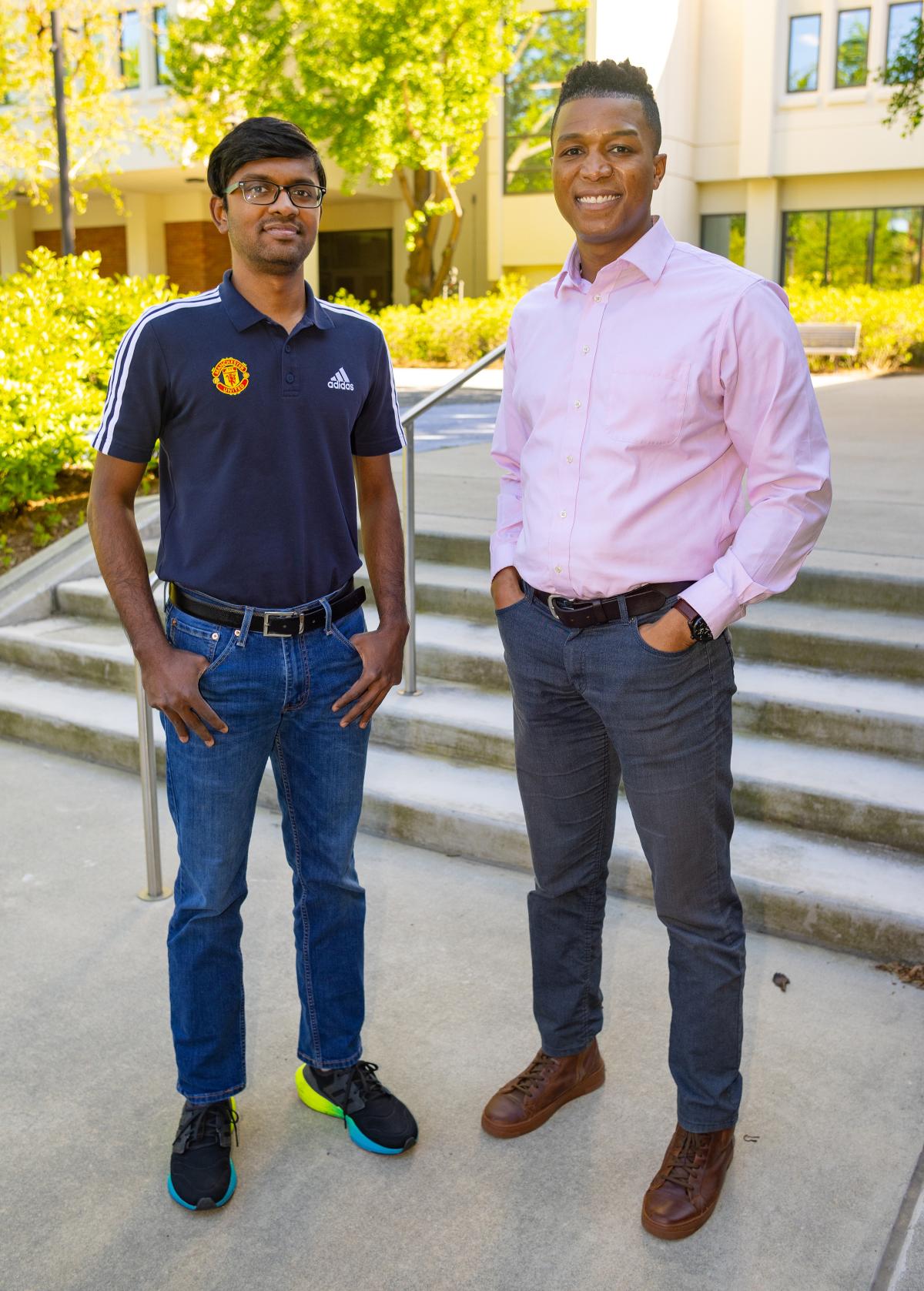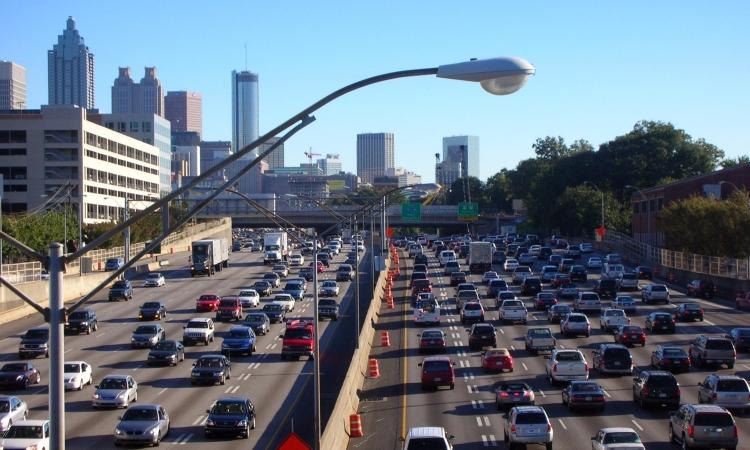Study looks at the environmental and economic benefits of overhead cable-line technology for nation’s highways

Siemens Mobility built an overhead contact line for electric trucks on a 6.2-mile stretch of Germany’s autobahn. (Photo courtesy: Siemens)
Electrical cables have been suspended over trams and trolley tracks for more than 140 years. They’ve electrified bullet trains in Japan and Amtrak railways that connect Washington D.C and Boston. Now the United States, Germany, and Sweden are testing the technology on highways, hoping to eliminate emissions from tractor-trailers.
A new study from Georgia Tech’s College of Engineering looks closer at using overhead cable line (OCL) technology to power trucks, evaluating if they are wise environmental and economical choices.
For some countries, including the United States as a whole, Sweden and Germany, the team suggests OCL technology is ideal. It’s also beneficial at the state level for New York, Washington, and Georgia. But for other areas, including India, China, West Virginia, and Kentucky, it shouldn’t be implemented until the region’s electric grid is cleaner. The study finds that putting electrified trucks on the roads in locations with dirtier electric grids actually would be more harmful to the environment than continuing to drive diesel tractor-trailers.
The Georgia Tech research team’s cradle-to-grave life cycle assessment of OCL long-haul electric trucks is published in the journal Environmental Research: Infrastructure and Sustainability. The study compares OCL trucks with battery electric vehicle (BEV) trucks and current diesel engine tractor-trailers.
The study finds that diesel trucks release 2.5 times more greenhouse gas (GHG) emissions than overhead-line and battery-powered vehicles. It also suggests that once OCL trucks achieve a 10% adoption rate (replacing 10 percent of the current fleet on highways), the technology is environmentally and economically beneficial over the other two options, despite the high costs of installing the equipment along highways.
With a caveat.
“It’s imperative that countries and regions shift away from coal and oil to a cleaner electricity grid to reduce overall GHG emissions rather than just deploying electric vehicle alternatives,” said Joe Bozeman, assistant professor in the School of Civil and Environmental Engineering and the study’s senior author.
For countries such as India, Poland and South Africa that rely heavily on fossil fuels, putting electric trucks on the roadways simply means displacing emissions rather than eliminating them, according to the study. Replacing traditional trucks with OCL machines solves the issue of burning diesel on the roadways. However, energy sources needed at power plants to support electrification would release even more emissions than current trucks in some countries.
The Nation’s Cleanest and Dirtiest Electric Grids
Based on kgs CO2e/Million Btu in 2020
CLEANEST
- Vermont: 31.6
- Washington: 33.6
- Oregon: 35.2
- New Hampshire: 36.0
- South Dakota: 37.0
DIRTIEST
- West Virginia: 74.4
- Wyoming: 72.7
- Kentucky: 68.9
- Utah: 66.7
- Missouri: 66.6
It was a finding that surprised co-author Arjun Ramshankar.
“Aggregating greenhouse gas emissions at dirty grids has the same effect, and often more of an effect, than burning diesel on the road,” said Ramshankar, first author and a second-year environmental engineering Ph.D. student. “Plus, having a dirty grid puts more strain on people living near power plants. These communities tend to be more economically distressed, often with residents from underrepresented backgrounds.”

Ph.D. student Arjun Ramshankar (left) and Assistant Professor Joe Bozeman led the OCL study. (Photo: Candler Hobbs)
It was Ramshankar who initially pursued the idea of the study after learning about OCL technology from a Georgia Tech classmate in his Sustainable Engineering course. He was unfamiliar with the cable system, which is more popular overseas than in the United States.
Ramshankar wanted to know how the benefits of OCL compared with diesel engines and BEV trucks. After not finding much data tied to OCL studies, he contacted Siemens. The company provided data from its trial run of the technology in Germany, Sweden, and Southern California.
Ramshankar and Bozeman also compiled international and national data about electricity usage and carbon dioxide emissions. From there, they completed a lifecycle assessment for each type of truck, considering everything from material extraction and manufacturing to electricity consumed per kilometer and the eventual disposal of the vehicles.
“Each technology has its benefits and deficiencies,” said Bozeman, who has a joint appointment in Georgia Tech’s School of Public Policy. “Diesel is the status quo, although its energy sources are not sustainable and emissions are high. BEV trucks release no tail-pipe emissions, but their batteries can weigh as much as 11,000 pounds. And the materials used for those batteries will soon be scarce.”
Bozeman continued: “OCL technology requires costly new infrastructure. However, that cost was outweighed by its environmental benefits when implemented in areas that mostly rely on solar, wind, and other clean energy sources.”
Among the countries the team evaluated, Sweden was best suited for OCL technology, as 99% of its electricity production is from renewable sources. Germany, Brazil, France, and Belgium also are primed for OCL. India, China, Poland, South Africa, and Estonia are not ready for OCL — or electrification of transportation in general — due to their reliance on coal and other fossil fuels for power generation, the study says.
The United States, as a whole, also is well-suited for the new technology. The states with the cleanest grids, and thus the most potential benefit from OCL adoption, are Vermont, Washington, and Oregon. Implementing the system would be counterproductive in West Virginia, Wyoming, Kentucky, Utah, and Missouri, where grids are dirtiest.
“According to the International Energy Agency, 25% of transportation-related emissions worldwide were created by road freight transport in 2019,” Bozeman said. “Our study highlights how important it is for decision-makers to pay attention to all system components before adopting new transportation technology.”
More about the OCL technology. (Video courtesy: Siemens)
(text and background only visible when logged in)
(text and background only visible when logged in)
Related Stories

Driving Change
Electric vehicles are becoming increasingly popular, and with economic and environmental impacts colliding, Georgia Tech experts are leading the way in the development of next-generation solutions.

CEE Faculty Receive Awards for 3 University Transportation Centers
Georgia Tech has been selected to be part of three university transportation centers — prestigious, federally funded research consortiums that advance the future of transportation.

Faces of Research: Meet Joe Bozeman
A Q&A with Joe Bozeman, assistant professor in the School of Civil and Environmental Engineering, the School of Public Policy, and director of the Social Equity and Environmental Engineering Lab (SEEEL).
(text and background only visible when logged in)
About the Research
CITATION: Arjun Thangaraj Ramshankar et al 2023 Environ. Res.: Infrastruct. Sustain. in press https://doi.org/10.1088/2634-4505/acc273
